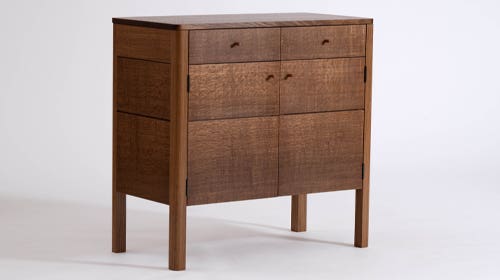Historic design in the Marble Palace
In a time when the nation’s economy couldn’t get much worse, the opening of a museum featuring immaculate woodworking restoration would seem unlikely. But the Richard H. Driehaus Museum of…
In a time when the nation’s economy couldn’t get much worse, the opening of a museum featuring immaculate woodworking restoration would seem unlikely. But the Richard H. Driehaus Museum of Chicago recently opened after the home’s furnishings and interior were meticulously restored.
The museum hails as one of the most amazing examples of the Chicago elite’s lifestyle during the 19th century Gilded Age. Driehaus, a Chicago-based philanthropist and preservationist, spent five years and used the newest advances in technology to bring this “Marble Palace” to life.
“The Driehaus Museum is a remarkable addition to Chicago’s cultural landscape,” says museum director David Bagnall. “It is a must-see attraction for those interested in American architecture, art and design, historic preservation and the history of Chicago. The museum is a truly immersive experience that celebrates the superlative design and craftsmanship of the grandest surviving residence of 19th century Chicago.”
The 25,000-sq.-ft. mansion, built from 1879-1883, was originally commissioned as a residence for liquor and banking magnate Samuel Mayo Nickerson. The structure cost $450,000 to build, a staggering amount for the time. The opulent interiors are replete with richly hued stained glass windows, shimmering mosaics of iridescent glass tile, and elaborately carved and inlaid wood paneling.
Highlights of the house include the grand entrance hall, clad in more than 17 types of marble; the dining room, which survives today as one of the finest carved rooms from the period; and Nickerson’s former art gallery where a striking stained-glass dome rises dramatically 25 feet above the mansion’s first floor.
Original objects and interiors of the house are complemented by period objects from the Driehaus Collection of Fine and Decorative Arts. The collection includes major works by artists and designers such as Louis Comfort Tiffany, the Herter Brothers, Emile Gallé and Louis Majorelle, along with American and European paintings and other decorative arts. The Driehaus Collection represents more than 30 years of dedication to the stewardship of late 19th and early 20th century visual culture.
“It is my hope that visitors to the museum will consider the importance of the built environment and what it means to their lives on a daily basis,” says Bagnall. “This restoration is not just about the experience of viewing a grand house, but also about neighborhoods and the context of architecture in helping to create them.”
For information, visit www.driehausmuseum.org.
This article originally appeared in the February 2009 issue.







